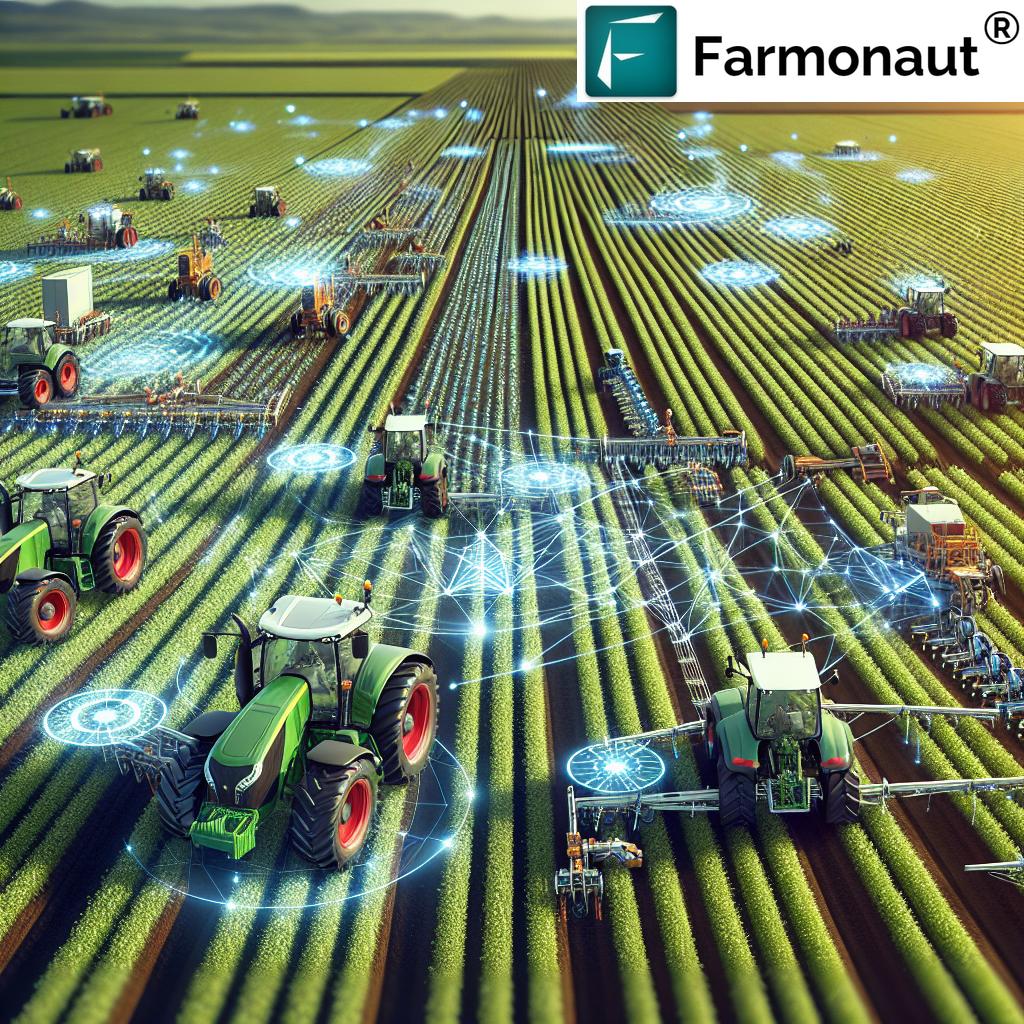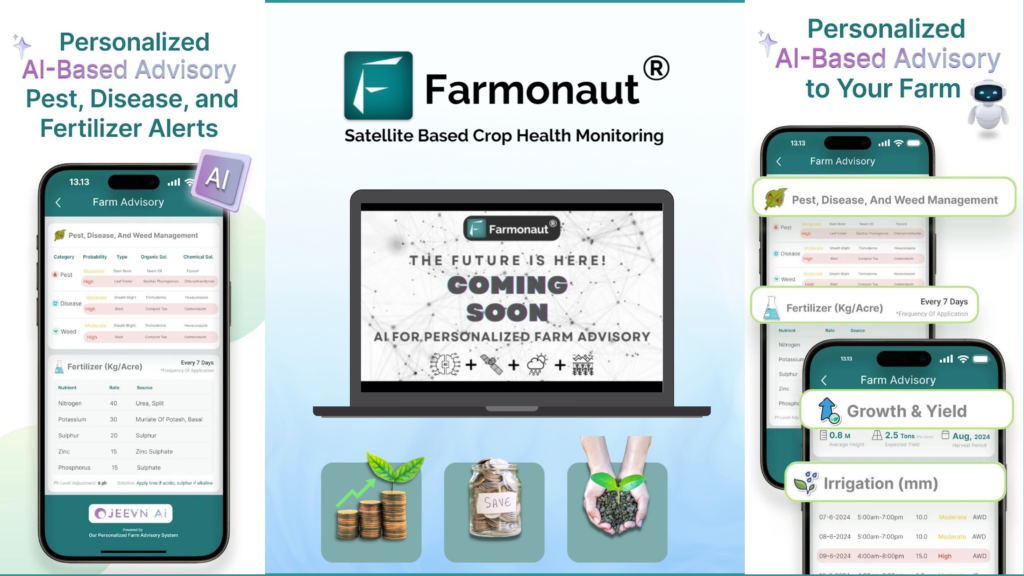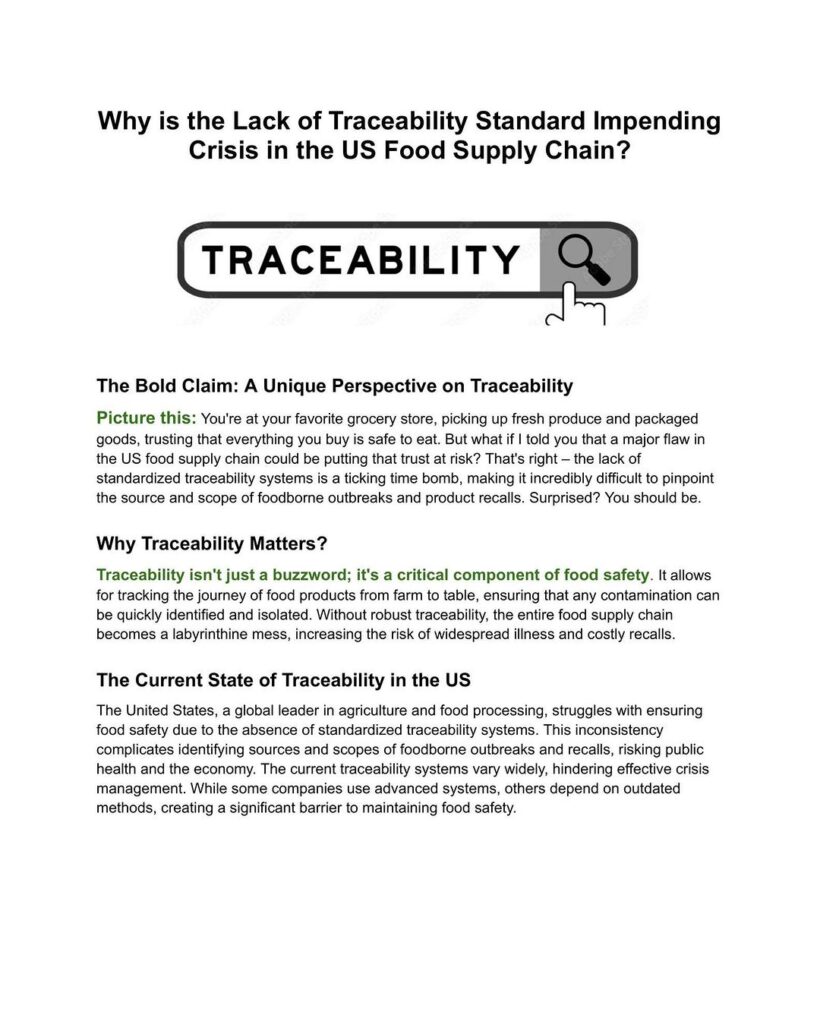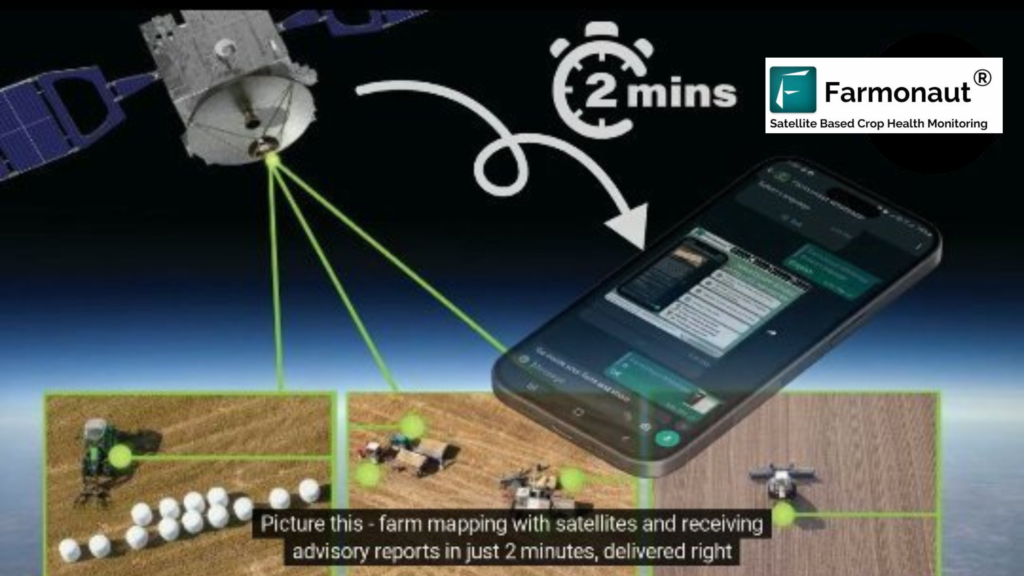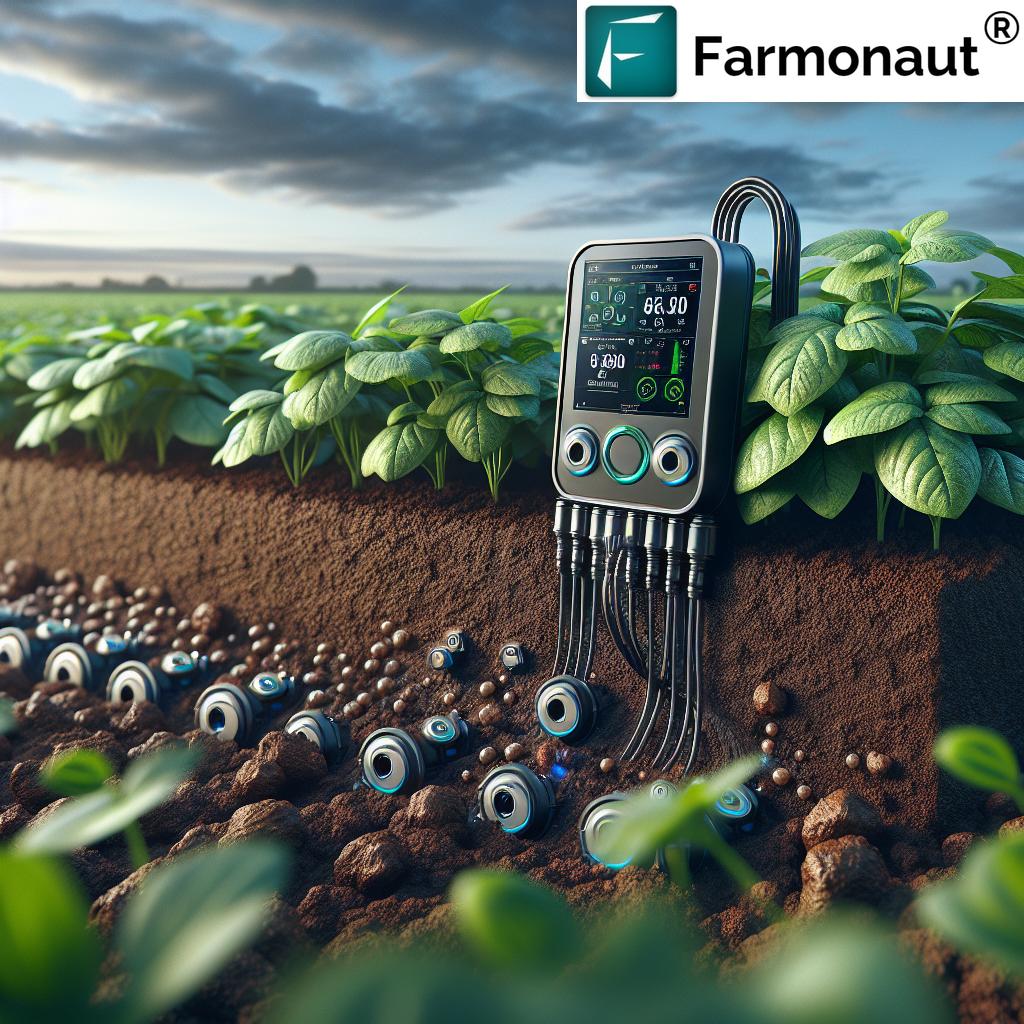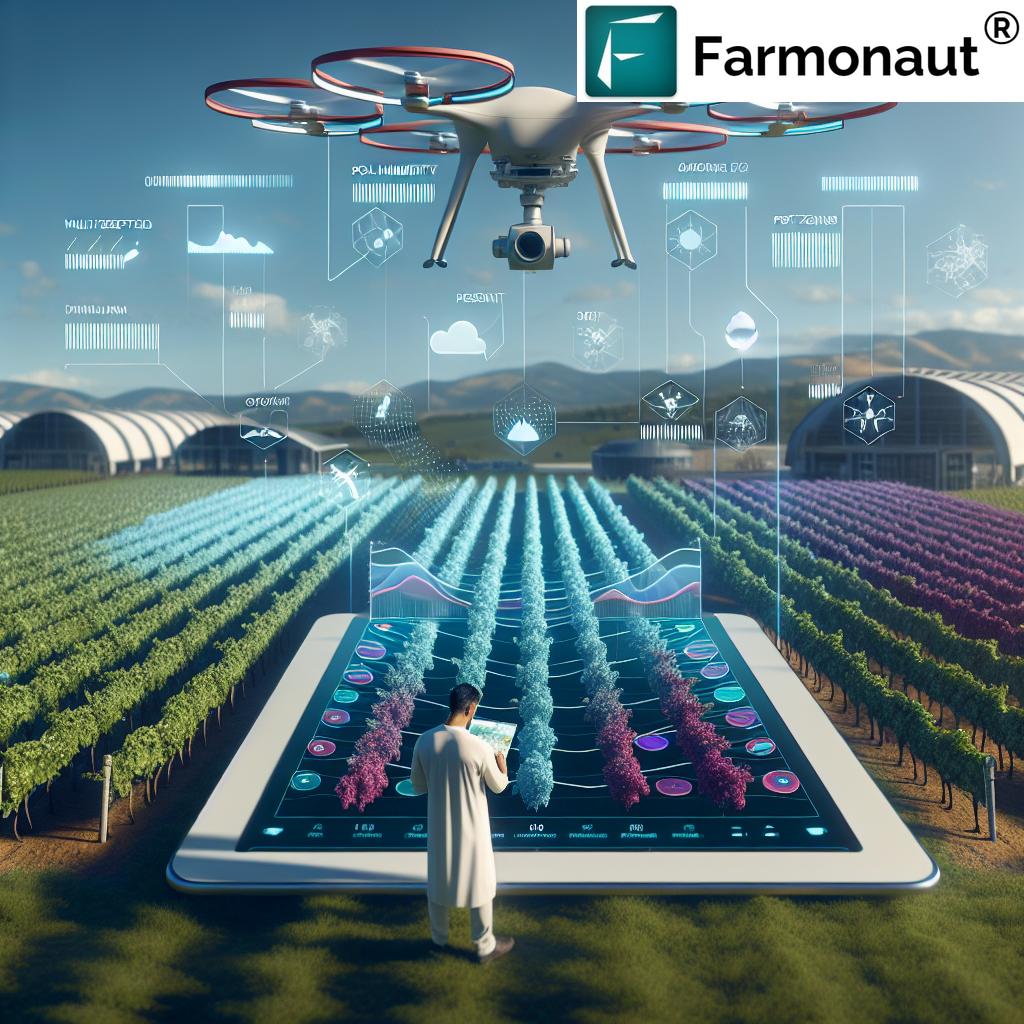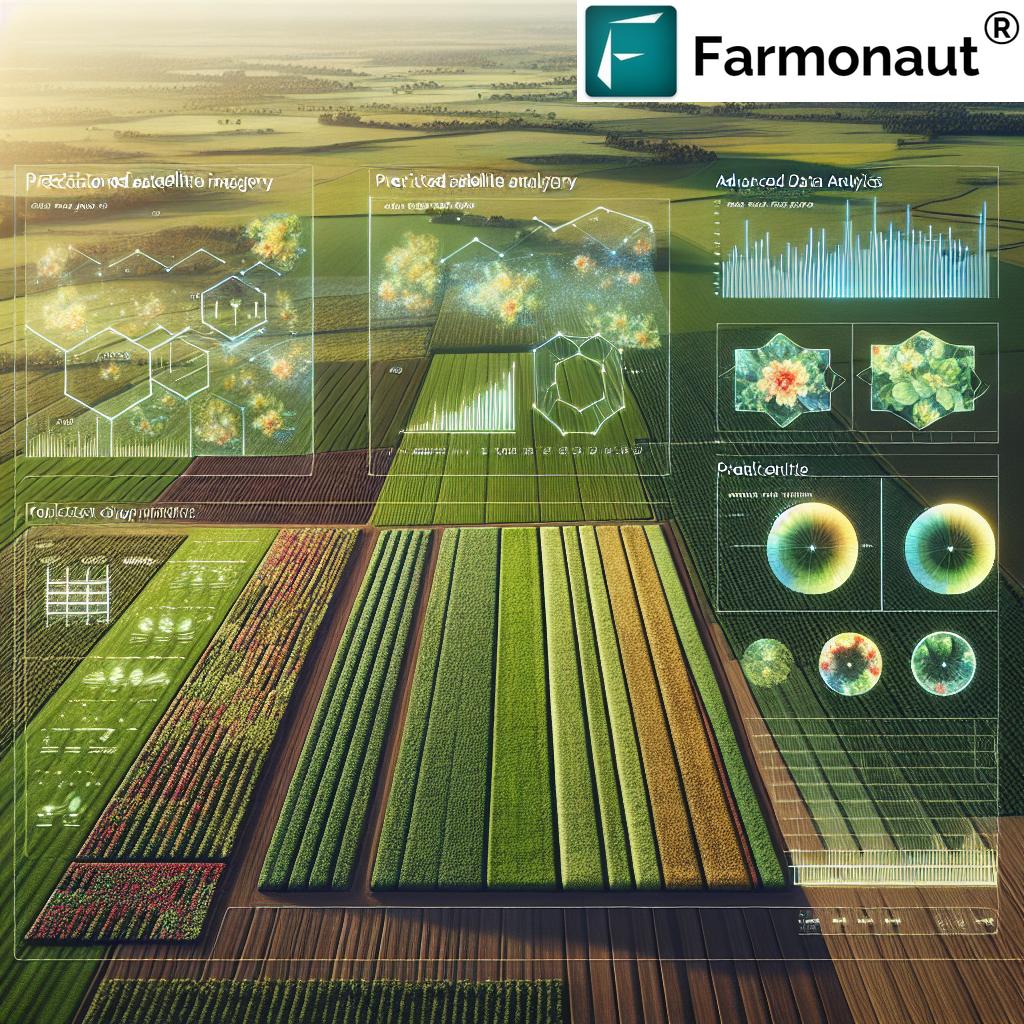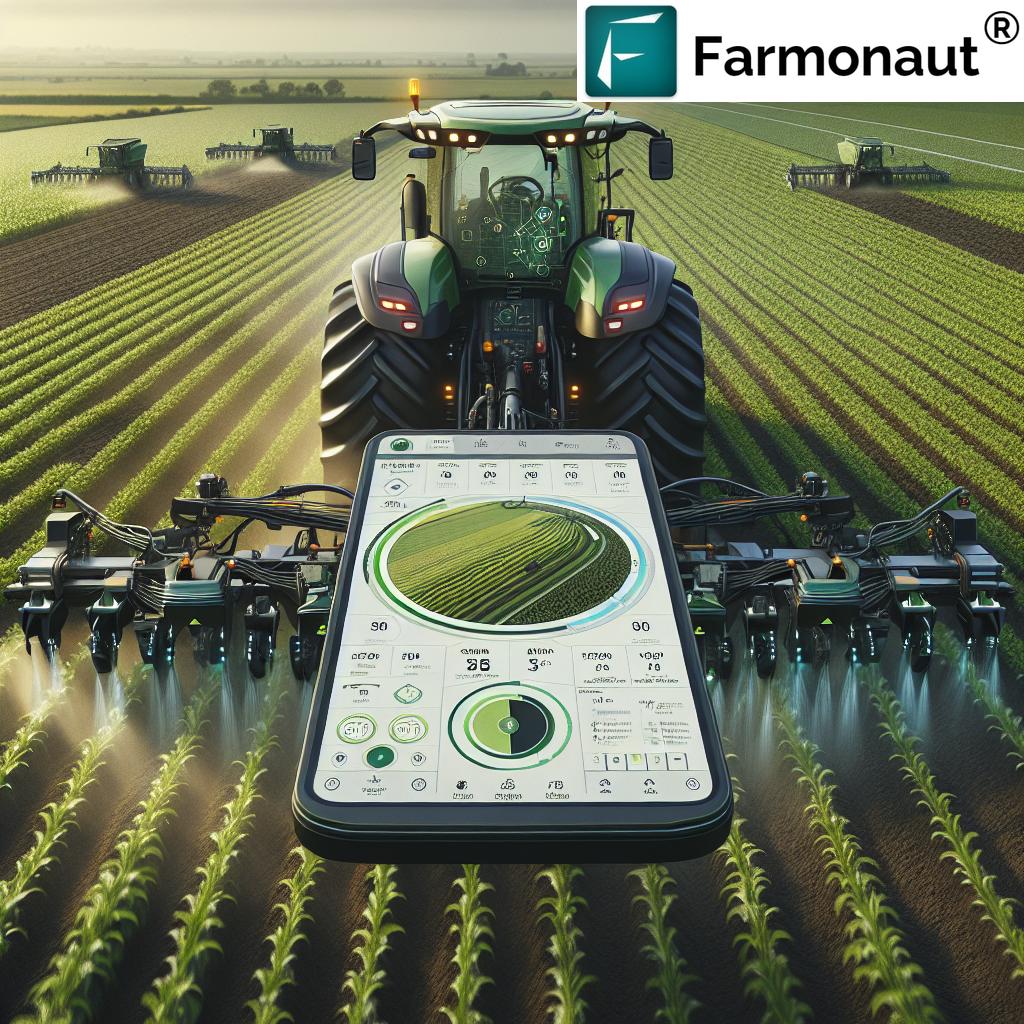NDVI vs NDRE: Unveiling the Power of Vegetation Indices in Precision Agriculture

In the ever-evolving landscape of precision agriculture, understanding and leveraging vegetation indices has become crucial for optimizing crop health and yield. Among these indices, two stand out as particularly significant: the Normalized Difference Vegetation Index (NDVI) and the Normalized Difference Red Edge (NDRE). At Farmonaut, we recognize the immense potential of these indices in revolutionizing farming practices. In this comprehensive guide, we’ll delve deep into the world of NDVI vs NDRE, exploring their differences, applications, and how they can be harnessed to transform agricultural practices.
Understanding Vegetation Indices: NDVI and NDRE
Before we dive into the specifics of NDVI e NDRE, let’s establish a foundational understanding of what these indices represent and why they’re so crucial in modern agriculture.
What is NDVI?
The Normalized Difference Vegetation Index (NDVI) is one of the most widely used vegetation indices in remote sensing. It’s calculated using the following formula:
NDVI = (NIR – Red) / (NIR + Red)
Where:
- NIR = Near-Infrared reflectance
- Red = Red reflectance
NDVI values range from -1 to 1, with higher values indicating healthier vegetation. This index is particularly effective at assessing overall plant health and biomass.
What is NDRE?
The Normalized Difference Red Edge (NDRE) is a more recent addition to the suite of vegetation indices. It’s calculated using the following formula:
NDRE = (NIR – Red Edge) / (NIR + Red Edge)
Where:
- NIR = Near-Infrared reflectance
- Red Edge = Red Edge reflectance
NDRE values also range from -1 to 1, but this index is particularly sensitive to chlorophyll content and can provide insights into plant stress that might not be visible to the naked eye.
NDVI vs NDRE: Key Differences and Applications
Now that we’ve established the basics, let’s explore the critical differences between NDVI vs NDRE and how these differences translate into practical applications in precision agriculture.
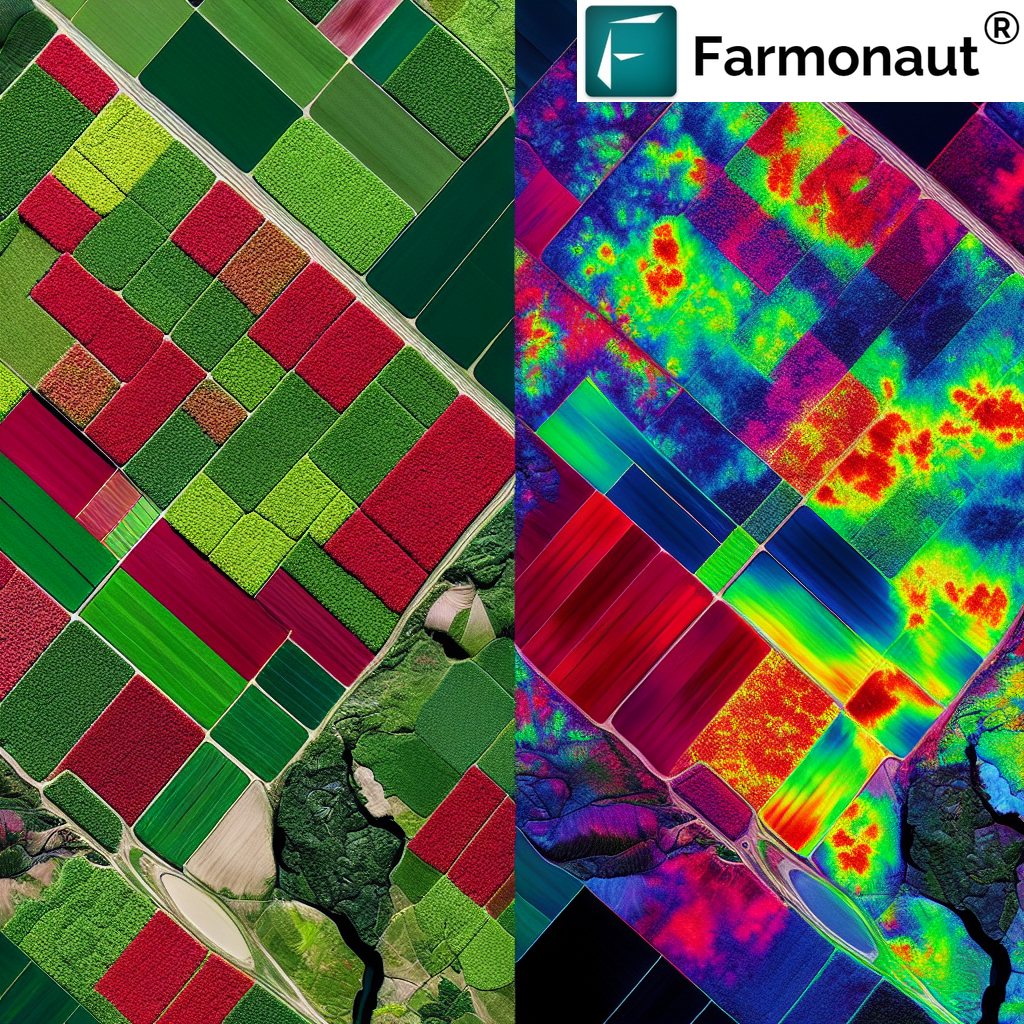
Spectral Sensitivity
NDVI: Utilizes the red and near-infrared bands of the electromagnetic spectrum. It’s highly sensitive to changes in overall plant health and biomass.
NDRE: Incorporates the red edge band, which lies between the red and near-infrared bands. This makes NDRE more sensitive to subtle changes in chlorophyll content and early signs of plant stress.
Canopy Penetration
NDVI: Tends to saturate in areas with dense vegetation or high leaf area index (LAI). This can limit its effectiveness in assessing variations within thick canopies.
NDRE: Offers better canopy penetration, allowing for more accurate assessment of plant health in areas with dense vegetation or multiple layers of leaves.
Growth Stage Sensitivity
NDVI: Most effective during early to mid-growth stages when canopy closure is not complete.
NDRE: Maintains sensitivity throughout the growing season, including later stages when NDVI might saturate.
Nutrient Status Assessment
NDVI: Provides a good overall picture of plant health but may not be as sensitive to specific nutrient deficiencies.
NDRE: More sensitive to nitrogen content in plants, making it particularly useful for assessing nitrogen status and guiding fertilization strategies.
Practical Applications of NDVI and NDRE in Precision Agriculture
At Farmonaut, we leverage both NDVI NDRE indices to provide comprehensive insights for precision agriculture. Here’s how these indices are applied in various aspects of farming:
Crop Health Monitoring
- NDVI: Excellent for assessing overall crop vigor and identifying areas of stress or poor growth.
- NDRE: Provides early detection of plant stress, often before visible symptoms appear, allowing for prompt intervention.
Fertilization Management
- NDVI: Helps in creating zone-based fertilization maps for variable rate applications.
- NDRE: Particularly useful for nitrogen management, guiding in-season fertilizer applications based on plant needs.
Irrigation Planning
- NDVI: Assists in identifying areas of water stress across a field.
- NDRE: Can detect early signs of water stress, allowing for proactive irrigation management.
Yield Prediction
- NDVI: Strong correlation with biomass makes it useful for early-season yield predictions.
- NDRE: Provides more accurate yield predictions in later growth stages, especially for high-biomass crops.
Pest and Disease Management
- NDVI: Helps identify areas of potential pest or disease infestation through changes in plant health.
- NDRE: Can detect subtle changes in plant health that might indicate early stages of pest or disease pressure.
Integrating NDVI and NDRE in Farmonaut’s Precision Agriculture Solutions
At Farmonaut, we’ve developed advanced algorithms that combine the strengths of both NDVI and NDRE to provide comprehensive crop health assessments. Our satellite-based monitoring system offers farmers and agronomists unparalleled insights into their fields.
Farmonaut’s Approach to Vegetation Indices
- Multi-Index Analysis: We don’t rely on a single index. Instead, we analyze both NDVI and NDRE, along with other proprietary indices, to provide a holistic view of crop health.
- Temporal Analysis: By tracking changes in these indices over time, we can detect trends and anomalies that might indicate emerging issues or opportunities for optimization.
- AI-Powered Interpretation: Our Jeevn AI advisory system interprets these indices in context, considering factors like crop type, growth stage, and local conditions to provide actionable insights.
- Customized Recommendations: Based on the analysis of these indices, we generate personalized recommendations for fertilization, irrigation, and other management practices.
Benefits of Farmonaut’s Integrated Approach
- Comprehensive Health Assessment: By leveraging both NDVI and NDRE, we provide a more complete picture of crop health than either index alone could offer.
- Early Problem Detection: The combination of indices allows for earlier detection of stress factors, often before they’re visible to the naked eye.
- Optimized Resource Use: Our insights enable precise application of inputs like water and fertilizers, reducing waste and improving efficiency.
- Improved Yield Predictions: The multi-index approach enhances the accuracy of yield forecasts throughout the growing season.
- Sustainable Farming Practices: By optimizing resource use and reducing unnecessary inputs, our approach promotes more sustainable agriculture.
Farmonaut Satellite System vs. Drone and IoT-based Farm Monitoring
While drones and IoT devices have their place in modern agriculture, Farmonaut’s satellite-based system offers several distinct advantages:
| Feature | Farmonaut Satellite System | Drone-based Monitoring | IoT-based Monitoring |
|---|---|---|---|
| Coverage Area | Unlimited (Global) | Limited by flight time and regulations | Limited by sensor placement |
| Frequency of Data Collection | Regular (Every 3-5 days) | As needed, but requires manual operation | Continuous, but localized |
| Initial Setup Cost | Low | High (Equipment and training) | Medium to High (Sensors and network setup) |
| Maintenance | Minimal (Software updates) | High (Hardware maintenance, battery replacement) | Medium (Sensor calibration, network maintenance) |
| Data Processing | Automated with AI | Often requires manual processing | Automated, but limited to sensor capabilities |
| Scalability | Highly scalable (from small farms to large operations) | Limited by operational capacity | Scalable, but requires additional hardware |
| Weather Independence | Can operate in most weather conditions | Limited by weather conditions | Generally weather-independent, but sensors can be affected |
| Regulatory Compliance | No special permits required | Requires compliance with aviation regulations | May require permissions for radio frequency use |
Leveraging NDVI and NDRE with Farmonaut’s Tools
To make the most of these powerful vegetation indices, Farmonaut offers a suite of tools and services:
- Farmonaut Mobile App: Access NDVI and NDRE maps on-the-go. Available for Android and iOS.
- Web Platform: Analyze detailed NDVI and NDRE data through our comprehensive web interface.
- API Access: Integrate our satellite data API into your existing farm management systems.
- Custom Solutions: Our team can develop tailored solutions leveraging NDVI and NDRE for your specific needs.
The Future of Vegetation Indices in Precision Agriculture
As technology continues to advance, we at Farmonaut are at the forefront of innovation in vegetation index analysis. Here’s what we see on the horizon:
- Hyperspectral Imaging: Future satellites may provide even more detailed spectral information, allowing for the development of more precise and targeted vegetation indices.
- Machine Learning Integration: Advanced AI algorithms will enhance our ability to interpret vegetation index data, providing even more accurate and actionable insights.
- Fusion with Other Data Sources: Combining vegetation index data with soil sensors, weather stations, and historical yield data will provide a more comprehensive understanding of crop performance.
- Real-time Analysis: As satellite technology improves, we’re moving towards near real-time vegetation index updates, allowing for even more responsive farm management.
Conclusion: Harnessing the Power of NDVI and NDRE with Farmonaut
The comparison of NDVI vs NDRE reveals that both indices have unique strengths in assessing crop health and guiding precision agriculture practices. At Farmonaut, we believe in leveraging the power of both indices to provide farmers with the most comprehensive and actionable insights possible.
By integrating these advanced vegetation indices with our satellite-based monitoring system, AI-powered analytics, and user-friendly platforms, we’re empowering farmers to make data-driven decisions that optimize yield, reduce resource use, and promote sustainable agriculture practices.
Ready to revolutionize your farming practices with the power of NDVI and NDRE? Explore our subscription options below and join the precision agriculture revolution with Farmonaut.
Frequently Asked Questions (FAQ)
- Q: What is the main difference between NDVI and NDRE?
A: The main difference lies in the spectral bands they use. NDVI uses the red and near-infrared bands, while NDRE uses the red edge and near-infrared bands. This makes NDRE more sensitive to subtle changes in chlorophyll content and early signs of plant stress. - Q: Which index is better for assessing crop health, NDVI or NDRE?
A: Both indices have their strengths. NDVI is excellent for overall plant health and biomass assessment, while NDRE is particularly useful for detecting early stress and assessing nitrogen status. At Farmonaut, we use both indices for a comprehensive analysis. - Q: How often should I monitor my fields using these indices?
A: With Farmonaut’s satellite-based system, we provide updates every 3-5 days, allowing for regular monitoring throughout the growing season. This frequency enables timely detection of changes in crop health and stress factors. - Q: Can NDVI and NDRE be used for all crop types?
A: While these indices are widely applicable, their effectiveness can vary depending on crop type and growth stage. Farmonaut’s AI system takes these factors into account when interpreting the data for different crops. - Q: How accurate are yield predictions based on NDVI and NDRE?
A: When combined with other data sources and analyzed by our AI algorithms, NDVI and NDRE can provide highly accurate yield predictions. However, factors like weather events and pest outbreaks can still impact final yields. - Q: Do I need special equipment to use Farmonaut’s NDVI and NDRE services?
A: No special equipment is needed. Our satellite-based system provides the data, which you can access through our mobile app, web platform, or API. - Q: How does Farmonaut ensure the accuracy of its NDVI and NDRE data?
A: We use high-resolution satellite imagery and advanced processing algorithms. Our data is regularly validated against ground-truth measurements and continuously improved through machine learning techniques. - Q: Can NDVI and NDRE help in organic farming?
A: Absolutely. These indices are particularly valuable in organic farming for monitoring crop health, detecting stress, and guiding organic fertilizer applications without the need for chemical inputs. - Q: How do weather conditions affect NDVI and NDRE measurements?
A: Cloud cover can interfere with satellite measurements. However, our system uses multiple satellite sources and sophisticated algorithms to provide consistent data even in challenging weather conditions. - Q: Can Farmonaut’s NDVI and NDRE services be integrated with other farm management software?
A: Yes, our API (documentation available here) allows for seamless integration with various farm management systems, enabling you to incorporate our vegetation index data into your existing workflows.
For more information on how Farmonaut can help you leverage the power of NDVI and NDRE in your farming operations, visit our web platform or contact our support team. Let’s work together to revolutionize agriculture through precision and data-driven insights!


